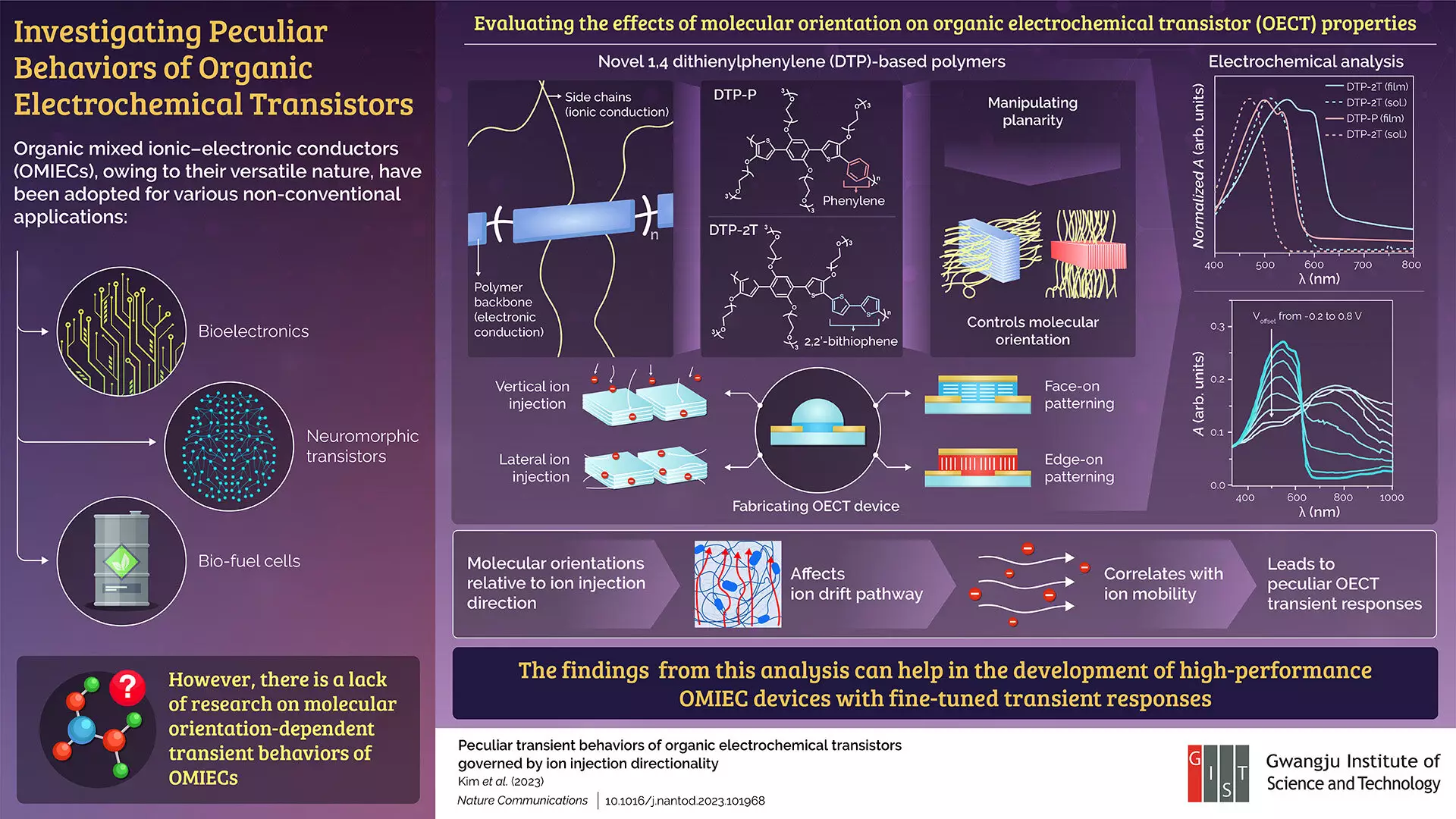Organic mixed ionic-electronic conductors (OMIECs) have garnered significant attention in recent years due to their unique properties and potential for non-conventional applications. These materials possess both electronic and ionic conduction properties, making them suitable for a range of fields, including bioelectronics, neuromorphic computing, and bio-fuel cells. However, to fully harness the potential of OMIECs, it is essential to diversify their properties and develop techniques for tailoring their features to specific applications. This article will explore the recent research on OMIECs and their molecular orientation-dependent transient behaviors.
Despite the growing popularity of OMIECs, there has been a severe lack of research on the transient behaviors of these conductors, specifically concerning molecular orientation. To address this gap, an international team of researchers from Korea and the U.K., led by Professor Myung-Han Yoon from the School of Materials Science and Engineering at Gwangju Institute of Science and Technology, conducted a study to investigate the peculiar transient behaviors of OMIECs governed by variations in molecular orientation.
Analysis Through Organic Electrochemical Transistors
The team utilized an organic electrochemical transistor (OECT) to explore the correlation between backbone planarity-dependent molecular orientation and transient OECT characteristics. Previous studies have already demonstrated the potential of OECTs as a platform for studying OMIECs. Factors such as direction, length, side chain symmetry, polymer backbone structure, and film crystallinity have all been shown to modulate the properties of OECTs.
To manipulate molecular orientation and evaluate its impact on transient behaviors, the researchers synthesized two new OMIECs: DTP-2T and DTP-P. These polymers had the same ionic and electronic properties but differed in their backbone planarity. By altering the planarity, the researchers were able to control the dominant molecular orientation within the mixed conductor system.
Through electrochemical analysis of the fabricated OECT devices, the researchers made several noteworthy observations. Initially, both polymers exhibited similar electrochemical properties despite having different molecular orientations. However, when the ion injection direction was changed during analysis, the researchers discovered that it influenced the length of the ion drift pathway. This length, in turn, indirectly affected the ion mobility within the polymers, resulting in peculiar transient responses in the OECT devices.
Implications for Future Applications
The findings of this study shed light on the molecular orientation-dependent characteristics of OECT devices. OECTs have the potential to mimic the computing mechanisms of neurons and synapses in spiking neural networks (SNNs). Consequently, they are highly promising for future computing systems, offering increased computation speed and reduced energy consumption. The insights gained from this research are expected to facilitate the realization of SNN-based computing systems in the near future.
Advancing Organic Mixed Conductor Materials
In addition to their impact on computing systems, the insights from this study could also facilitate the design and development of advanced organic mixed conductor materials for biomolecular and biosignal sensors. Understanding how molecular orientation affects the transient behaviors of OMIECs opens up new possibilities for tailoring these materials to specific applications, enhancing their efficiency and performance.
The recent study conducted by Professor Myung-Han Yoon and his international research team addresses the lack of understanding regarding the molecular orientation-dependent transient behaviors of organic mixed ionic-electronic conductors. By utilizing an organic electrochemical transistor, they were able to manipulate molecular orientation and observe its impact on OECT characteristics. These findings contribute to the growing body of knowledge surrounding OMIECs and have the potential to advance various fields, including bioelectronics, neuromorphic computing, and bio-fuel cells. Continued research in this area will undoubtedly unlock further insights and possibilities for the utilization of OMIECs in non-conventional applications.


Leave a Reply